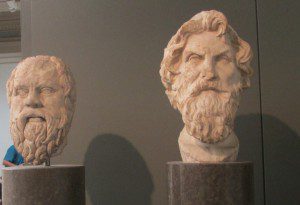In their new stunning book, Academically Adrift: Limited Learning on College Campuses, a book that uses an ancient genre — the academic jeremiad — with exquisite accuracy, Richard Arum and Josipa Roksa prove — not contend — that students are not learning what they should, professors are not doing all they could, administrators are not focused on education enough and, as if that weren’t a glassful, society is and will continue to suffer is something isn’t done about it.
 This will have to be a series, and I am asking for your observations as we march through some of these themes, so today I want to sketch their four-fold areas of concern. Before I do that, though, I want to emphasize that we are talking degrees here and not either/or. It is easy to criticize educators and it is far easier to do so than to do something about it that improves the situation. I consider what I do to be a privilege and I love my students — well, most of them. This book focuses on problems in order to foster change and improvement.
This will have to be a series, and I am asking for your observations as we march through some of these themes, so today I want to sketch their four-fold areas of concern. Before I do that, though, I want to emphasize that we are talking degrees here and not either/or. It is easy to criticize educators and it is far easier to do so than to do something about it that improves the situation. I consider what I do to be a privilege and I love my students — well, most of them. This book focuses on problems in order to foster change and improvement.
Do you see these concerns? Any others?
So, now, on to the areas of concern:
First, students. Here is a set of facts: From the 1920s to the 1960s full-time college/university students spent approximately 40 hours in academic pursuits — classes and study. Today the students spend 27 hours. That means about 13 hours a week studying. Prior to the 60s it was about 25 hours.
This diminution of time has resulted in no appreciative change in grade point average or upon progress toward completion of the degree.
Second, professors. The major shift has been toward “if you leave me alone I will leave you alone” posture. The big issues here are these: professors have increasingly been asked to spend more time on non-academic, non-teaching activities, have not been compensated sufficiently, and are increasingly more stimulated by and interested in research. Part of this is financial, but another part is the publication is seen as the #1 most important element of both recognition and promotion. Professors are therefore distracted from teaching — by their research, by committee work, by added responsibilities… Faculty spend about 11 hours on academic tasks like teaching and advising, and the rest of their time is spent on other things, often nonacademic institutional tasks. Many profs I know have to scramble to find time for research. The result is that less time is spent with students than one might think.
I add an observation: I find three kinds of professors. Some are research-oriented and scramble and work for time to do that research; some are much more focused on teaching and student interaction; and others seem more interested in the politics of the institution and work their way into administrative posts or into influence with the Senate or somehow shaping the institution itself.
Third, administrators. Their studies show that administrators too are distracted just as much, if not more, from the academic task of education to other things — like support staff, review, and raising funds. They call what has happened here over time ” nonacademic professionalization.” The Admin task is often concerned with the many facets of the school — like sports teams, community service projects, campus enhancement and alumni loyalty.
Fourth, education itself. This can be reduced to a simplicity that is accurate: the university/college has shifted in emphasis from preparing students for moral and civic lives of virtue to professional employability. Students increasingly see education as an instrument to get them to the next phase of life and less as a place of formation.











